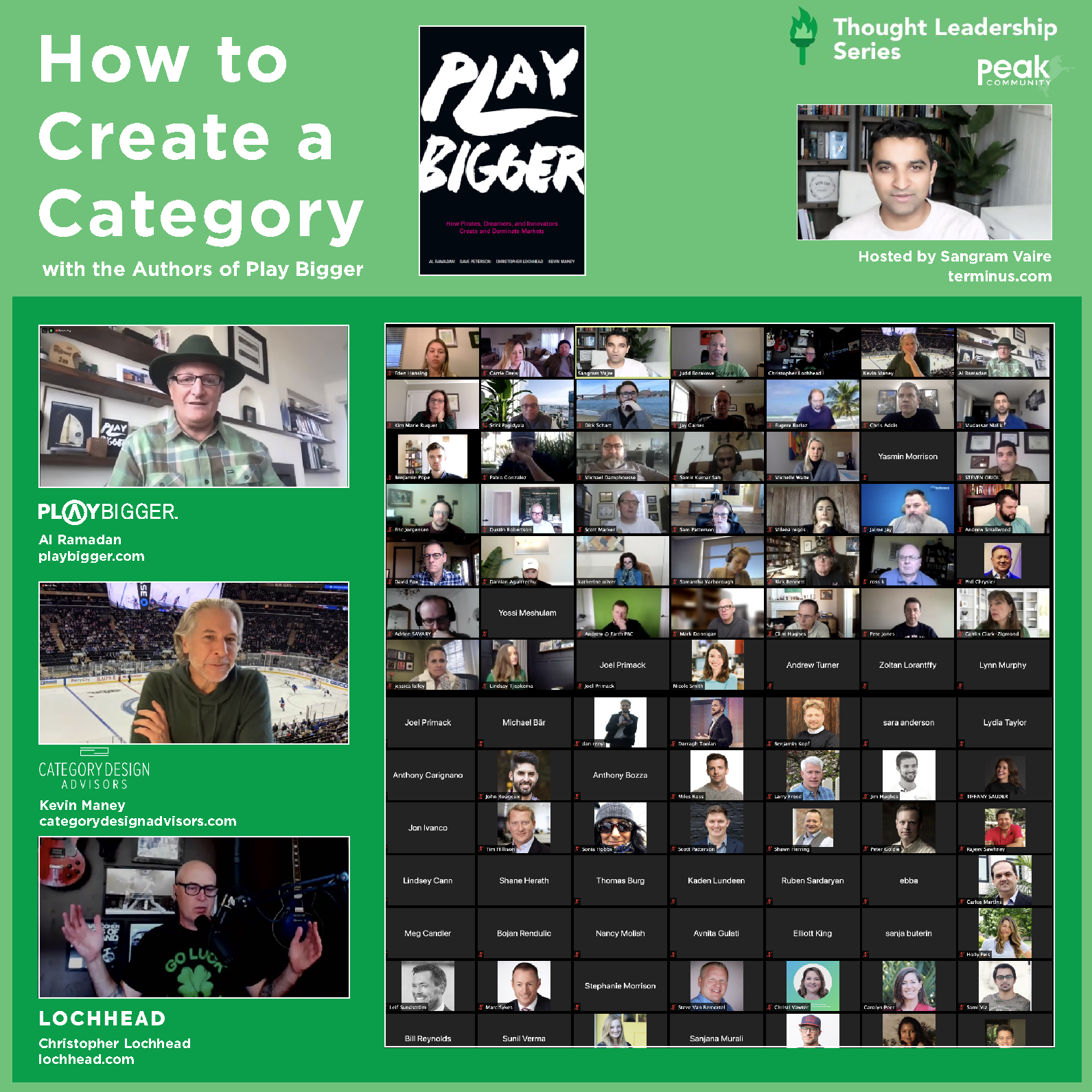Hosted by Sangram Vajre, co-founder of Terminus who created his own Category called “ABM”, the 90-minute forum was chock full of in-depth Category Design discussion and nuggets of wisdom from the highly- knowledgeable panel.
Here’s 12 highlights from the session:
- The number one goal of category design is to frame the problem, be sure to articulate the problem you’re solving.
- Don’t conflate Category Design with the first mover. The first company to frame the problem/opportunity solution and gets the POV to tip at scale, usually become the Category Leader.
- Category Design is not unlike Experience Design, Industrial Design, Product Design or any other design methodology.
- One common misconception about Category Design is that it’s either Branding or Messaging. It’s a strategy about a space/problem that is not being solved. “It’s the difference between being “better” or “different” – the sustaining companies that create giant market caps are the ones who think differently, frame the problem, take ownership for the problem, solve the problem,” Al explained.
- The panel agreed that the vast majority of people in business pray at either the product alter or the brand alter. They believe the best brand wins and the best product wins. Those people should never even attempt to do Category Design, they are missing the point.
- Growth companies are evaluated by venture capitalists based on future potential, not past performance.
- When it comes to Product vs. Brand -- using lexicon straight from the PLAY BIGER book -- within your Category Design journey, the distinction is clear:
- Brand = P.O.V. (problem, narrative, pain points)
- Product = Blueprint (solutions)
- The size of the “Problem Space” dictates the Total Available Market (TAM).
- At the C-suite level, the CEO drives Category Design.
- Category Design is an essential ingredient in all stages of product and company design, from Seed financed to Public companies.
- Industry Analysts are generally looking in the rear-view mirror. Engage with them, educate them on the problem, and your vision for the future.
- Category Design is not equal to marketing. Marketing plays an important role, but so does product and sales.
- In the end Category Design fuels growth by expanding TAM, differentiating from competition (driving mind & market share), and increases Annual Contract Value "(ACV)
Become a member of PEAK Community to find the full video recording: www.peak.community

